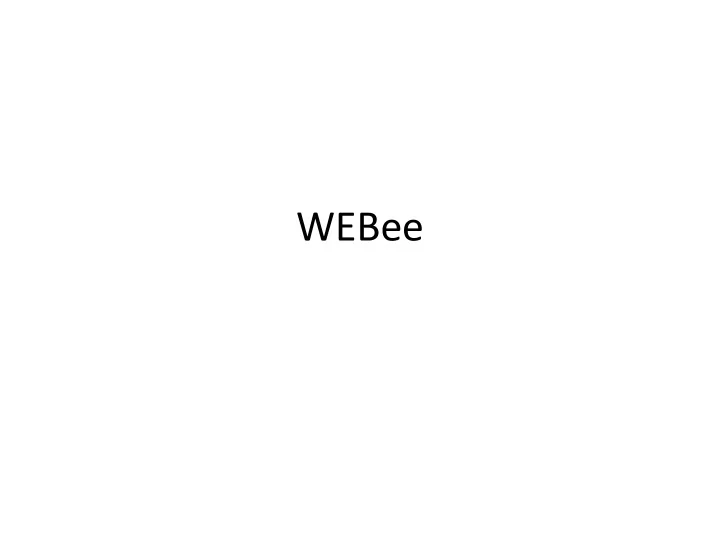

WEBee
Reverse Convolution Coding
Reverse Convolution Coding • Convolutional encoding uses a 288-by-216 matrix M – M is not full row-rank (row:288 > column:216), the matrix equation is an overdetermined system • ZigBee signals occupy only a 2MHz band, covering 7 WiFi subcarriers. – To emulate ZigBee signals, WEBee needs to control only 7 WiFi QAM points
Reverse Convolution Coding • WEBee needs to control only 84 bits (14 ×6 bits) of Y by manipulating the X • Mʹ a full row-rank matrix (row:84 < column:216) – WEBee can emulate an arbitrary combination of 14 QAM points with 216 source bits in multiple ways.
NULL subcarrier Avoidance • Central frequency of a WEBee channel is set so there are ZigBee channels which do not overlap with the Null subcarrier
Cyclic Prefixing (CP): WiFi cyclic prefixing, • – a technique to eliminate inter-symbol interference (ISI). – A guard interval lasting 0.8 μs in each WiFi symbol is copied from the right of WiFi symbol and pasted into (overwrite) the left of the symbol – we have a segment of signals with 0.8 μs du ration which is out of our control in signal emulation Direct Sequence Spread Spectrum (DSSS) • – Multiplying original bits with a pseudo random noise spreading code – ZigBee symbol (i.e., 4-bits) are mapped into a 32-chip sequence – 12 chip errors can be recovered by the Zig-Bee DSSS technique Due to the use of DSSS error due to CP can be tolerated by the • ZigBee symbol
LTEBee • Digital emulation vs analogue emulation – do not need to generate the exact waveform in the time domain.
LTEBee • ZigBee uses OQPSK, – phase shifts between two samples, instead of the values of these samples used to demodulate. – phase shifts quantized based on their signs
LTEBee • 16QAM can not generate exact 90 or -90 phase shifts • It can generate the phase shifts with the right signs.
LTEBee • Transition from ’0010’ to ’0001’ generates the phase shift of Q1 • Will be demodulated as chip 1 correctly, – despite not strictly following ZigBee’s analog signal.
LTEBee • Re-sample the entire target ZigBee signal with the LTE sample rate • Calculate the phase shifts for these samples • Allocate 16QAM constellation to these sample – generated LTE signal and target ZigBee signal have the same signs for phase shifts at all of these sample intervals.
• Reverse engineer channel (Turbo) coding to get IP payload – Matrix Inversion
Sources of error • Subcarrier Mapping – distorts original signal, and we cannot obtain desired phase shift pattern – pre-processes the sequence cancels out the impacts of the frequency exchange effects • Uncontrollable CRC in turbo encoding • Uncontrolled Header Bits
• Range Extension
• Robustness
Recommend
More recommend